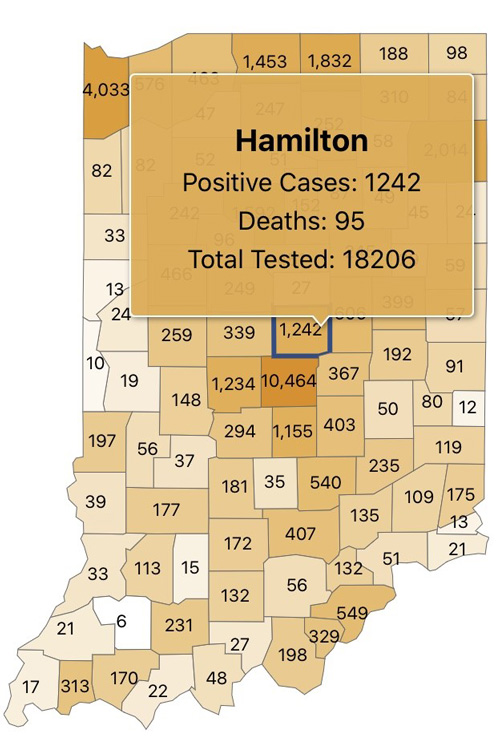WISH-TV | wishtv.com
Gov. Eric Holcomb said Wednesday that Indiana will advance Stage 4 of its Back on Track plan on Friday, two days earlier than initially planned.
Stage 4 is to continue through July 3 in all counties in Indiana, although there are two northern Indiana counties – Elkhart and Lagrange – with concerns. Marion and Cass counties – both had entered Stage 3 at later dates – can enter Stage 4 on Friday, but local officials can change that if they want, the governor said.
The changes will include:
- Social gatherings allowed will rise to up to 250 people.
- Restaurant dining rooms will open to 75 percent capacity while maintaining social distancing.
- Bars and nightclubs will open to 50 percent capacity while maintaining social distancing.
- Retail stores and malls will open at full capacity.
- Cultural, entertainment and tourism sites – museums, zoos, aquariums and other venues – will open at 50 percent capacity.
- Movie theaters and bowling alleys will open at 50 percent capacity.
- Community youth and adult recreational games, leagues and tournaments may resume.
- Racing venues may open at up to 50 percent capacity while maintaining social distancing.
- Parimutuel horse racing will begin with no spectators at Hoosier Park and Indiana Grand facilities.
- Charity gaming and casinos may open June 15 with approval of the Indiana Gaming Commission.
- Amusement parks and water parks may open at 50 percent capacity. A reservation system is recommended.
- Playgrounds may reopen. Children should wear masks and use hand sanitizer. Multiple children playing on equipment should wear masks. Avoid eating food at the playgrounds. Guardians may want to change children’s clothes after visiting playgrounds.
- State government buildings may reopen by appointment.
- Festivals, fairs, parades and carnivals remain closed until Stage 5, which would arrive July 4 if the coronavirus numbers continue to show hospitals are accessible and the COVID-19 remains under control.
Holcomb said he does not want to predict whether Stage 5 might arrive a few days earlier as Stage 4 did.

Graphic provided by Indiana State Department of Health
Dr. Kristina Box, commissioner of the Indiana State Department of Health, said, “I don’t want to predict where we’re going to be two weeks or two and a half weeks from now, but our numbers do look really good right now, and we will continue to look at the state as a whole but also look at individual counties and individual regions because we want to work with them and make sure that they are doing and we are doing what’s the safest things for their communities also.”
Box also warned people who are 65 and older to continue to take precautions because the virus can affect them with greater effect. Face coverings continue to be recommended for everyone. She added that more than 90 percent of Indiana’s deaths have involved people 60 or older.
The health commissioner said Elkhart and Lagrange counties have seen increases in positive virus cases that are concerning but may be a result of increased testing availability. She said targeted testing may be needed in those counties to identify the cause of the rising numbers. Most concerning, she said, is an increase in hospitalizations in Lagrange County.
The state is having meetings today representatives in northeastern Indiana counties in regard to the Amish population, Box said. Amish faith-based gatherings such as weddings are sometimes large, and the state is wanting to work with the counties to educate the Amish population about the risks.
Earlier on Wednesday, the Indiana State Department of Health announced 339 new COVID-19 cases and 15 additional deaths.
In total, there are 38,337 COVID-19 cases and 2,173 deaths related to the virus in Indiana.
According to the department, there have been 320,094 tests administered in the state.
According to the Center for Systems Science and Engineering at Johns Hopkins University, there have been more than 7,271,000 confirmed cases worldwide, with more than 3,398,000 recoveries and more than 412,000 deaths.
